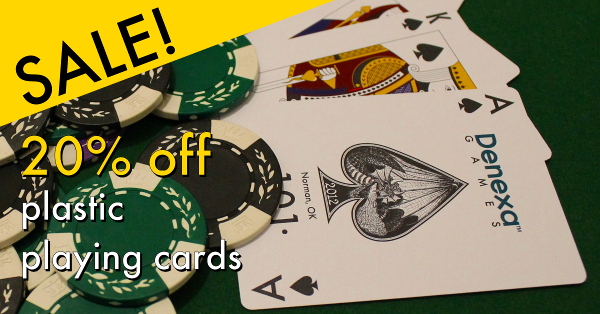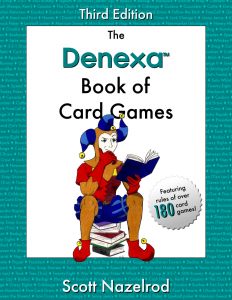Divide and Conquer
Divide and Conquer is a simple game for two players. Much like Gops, the exact composition of each player’s hand is known to both players, and all of the strategy comes from simply playing the right cards at the right time! As in Mate, the only element of luck is the cards the player is initially dealt, and this is canceled out by the players switching hands after playing through them. As a result, the game is one of the rare examples of a card game that is entirely based around strategic play.
Divide and Conquer was invented by Claude Soucie, a Canadian-born game designer with several published board games under his belt. Soucie was a longtime friend of renowned game inventor and author Sid Sackson; the latter published Divide and Conquer in his 1981 compendium Card Games Around the World.
Object of Divide and Conquer
The object of Divide and Conquer is win the majority of the game’s ten matches. A player does not necessarily know what card their opponent will play next, so this more or less involves outwitting the other player.
Setup
Divide and Conquer uses a very small number of cards. Take a deck of Denexa 100% Plastic Playing Cards and extract one queen, and one each of all of the cards 2–10. (Suit doesn’t matter.) These ten cards are all you need to play the game.
Shuffle and deal five cards to each player, exhausting the pack.
Game play
Before beginning play, each player should carefully examine their hand. It is important to realize that the five cards they don’t have are the ones their opponent does have. Furthermore, all of the plays are left face-up on the table. That means that at any given point in time, each player knows the exact cards their opponent holds.
Each player places one card from their hand face down on the table. When both have done so, the cards are both revealed, and compared to see which is the winner. In most cases, the higher card wins (cards rank in their usual order). However, if the pip value of the lower card divides evenly into the higher card, the low card wins. The queen has a value of twelve for the purposes of division. Also, if the low card has a pip value of exactly one below the high card, the low card wins.
Some examples:
- 9-5. The 9 wins because it is higher.
- Q-6. The 6 wins because 12 ÷ 6 = 2.
- 10-9. The 9 wins because it is one lower than the 10.
- 9-3. The 3 wins because 9 ÷ 3 = 3.
After the winner of the match is determined, both cards are placed in the middle of the table. The cards should be placed so that the two cards are clearly next to each other, with each card on the same side of the table as the person who played it. The losing card should be turned at right angles to signify its loss. The next match is then played the same way.
After the fifth match, both players will be out of cards. The cards are assembled back into their original hands, and the two hands are then swapped. The players then play five more matches, using the cards their opponent was originally dealt.
Whichever player wins a majority of the matches wins the game. If the players evenly split the matches, the game is a tie.
Variation
For a longer game, use a fourteen-card deck composed of 2–10 of one of the black suits and 2-4-5-6-8 in one of the red suits. The values of the red cards are equal to ten plus the pip value, so the red 2 has a value of twelve, the red 4 is fourteen, etc. Deal seven cards to each player. The best of fourteen matches wins.



Leave a Reply